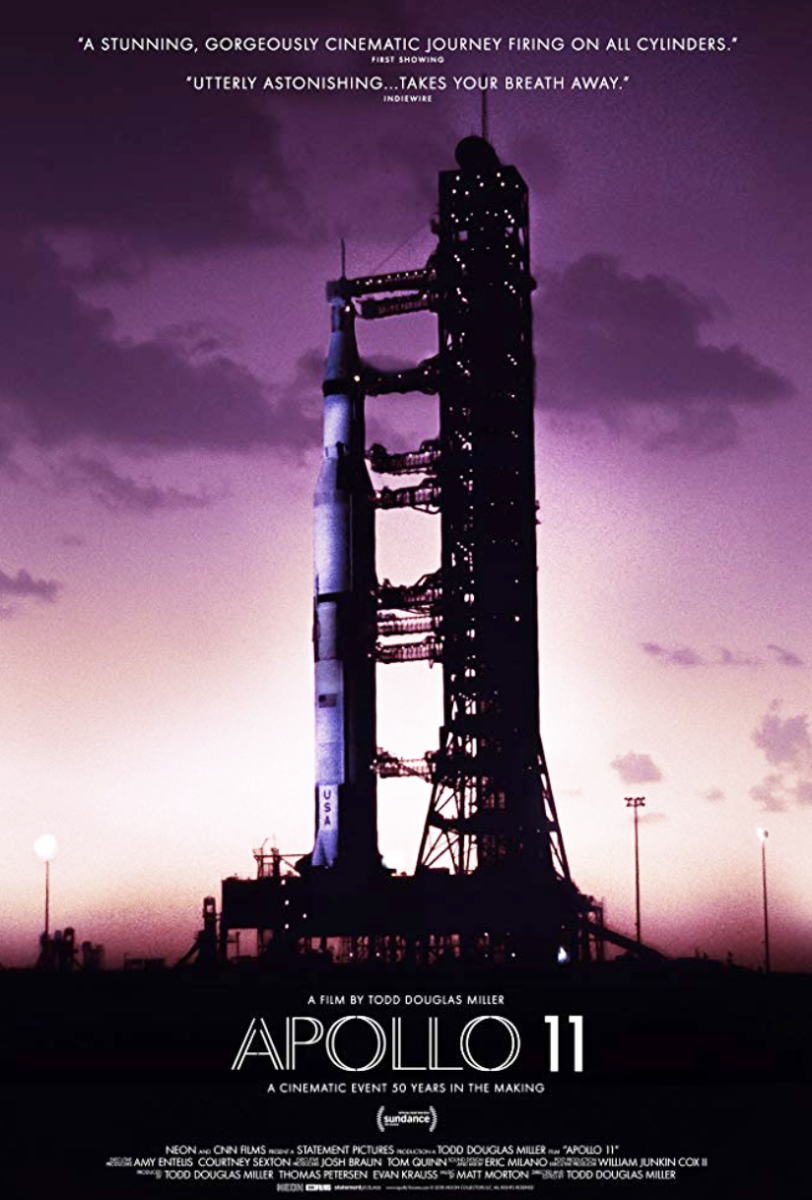
Todd Douglas Miller’s documentary, “Apollo 11,” hits theaters on Feb. 28, but the True/False Film Fest attendees saw it first at Jesse Auditorium. On top of that, Miller Skyped with the audience following the screening for a Q&A. He described the intention of the film as “to make an art film out of all the archival materials we had available, and in the end, we created a direct, fly-on-the-wall cinema experience.”
The film took the audience on a lifelike adventure, in which there was surround sound and impeccable visual quality. In this adventure, we see the Apollo 11 story told through real footage of the events leading up to and after launch. The storyline emphasizes the first two men to walk on the moon, Neil Armstrong and Buzz Aldrin, but also captures Michael Collins, the third astronaut on the mission, as well as the collective efforts of hundreds of people at NASA.
The film also emphasizes the politics surrounding the mission, such as president John F. Kennedy’s celebrated speech where he said, “We choose to go to the moon. We choose to go to the moon in this decade and do the other things, not because they are easy, but because they are hard, because that goal will serve to organize and measure the best of our energies and skills, because that challenge is one that we are willing to accept, one we are unwilling to postpone, and one which we intend to win, and the others, too.” President Richard Nixon famously greeted the Apollo 11 astronauts to welcome them upon their return to Earth.
Their arrival home depicted a global celebration, even more so in America. It captured the unity mankind is capable of, and the strides we can make to better our species and bring us together. The return to Earth showcased hundreds of thousands of Americans crowding big cities waving the American flag.
The documentary is primarily made up of archived images and videos to give a true sense of the journey and pull audiences in. One might anticipate that the journey wouldn’t feel as realistic or be of high quality due to the fact that it is original footage from the late 60s. However, the images and videos were thoroughly enhanced by filmmakers in order to create the most vivid and intense visuals as possible.
Despite audiences knowing how the story ends, Miller sets up the story in a way that still makes it captivating. Many people have seen footage from the Apollo 11 mission, but never to this extent in terms of its high definition. Additionally, the music aligned with each moment enhanced the overall “adventure.” As the astronauts prepare to launch into space, we are anxiously awaiting their departure as the visuals being shown are a timer counting down, slow capturing of the entire spaceship from bottom to top, hundreds of people standing and watching from Houston and a background sound of a heavy heartbeat.
Miller’s goal in creating the film was to create a true sense of what the astronauts experienced, and take audiences on a journey that would emulate the Apollo 11 mission to the best of its ability.
_Edited by Janae McKenzie | [email protected]_